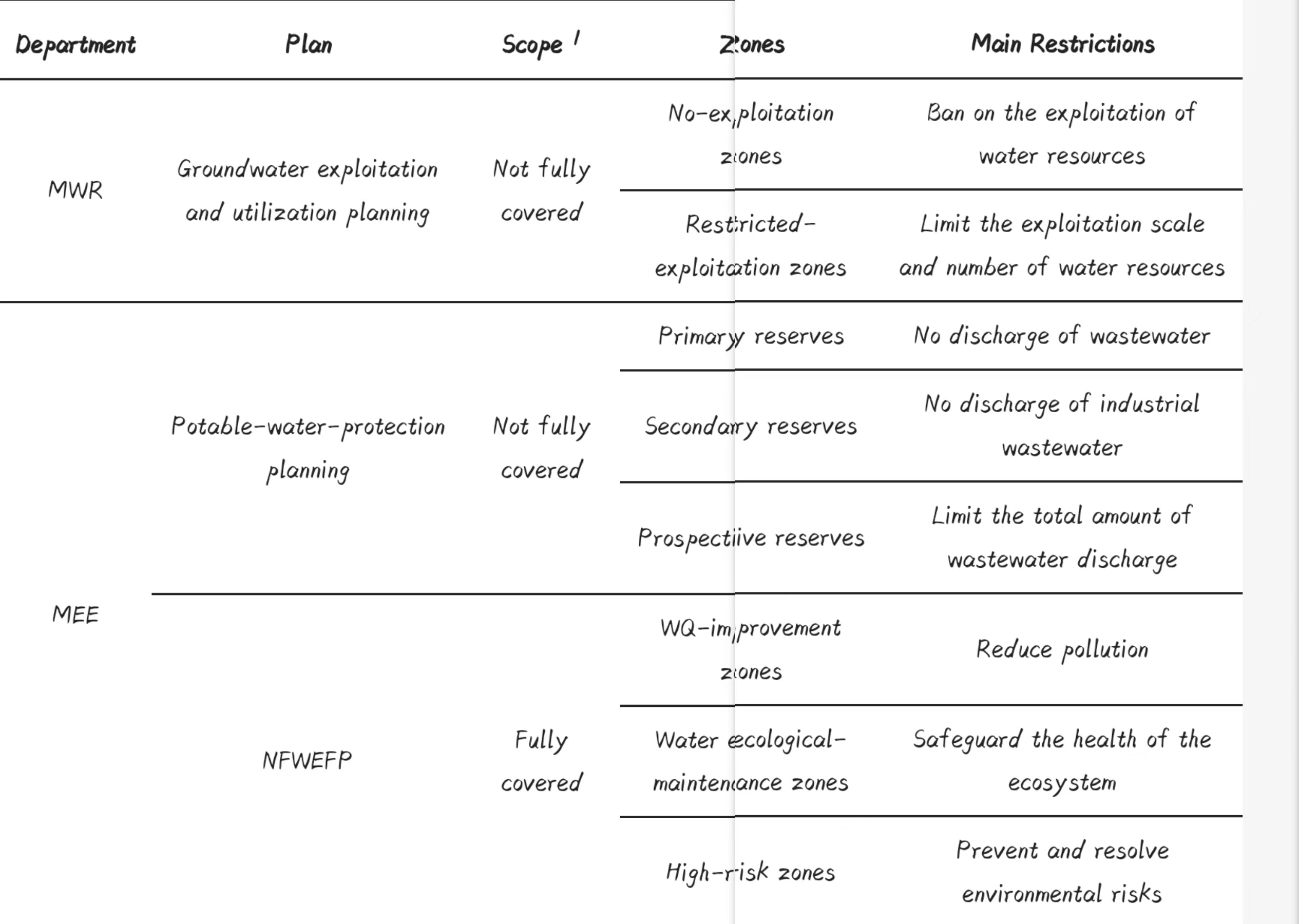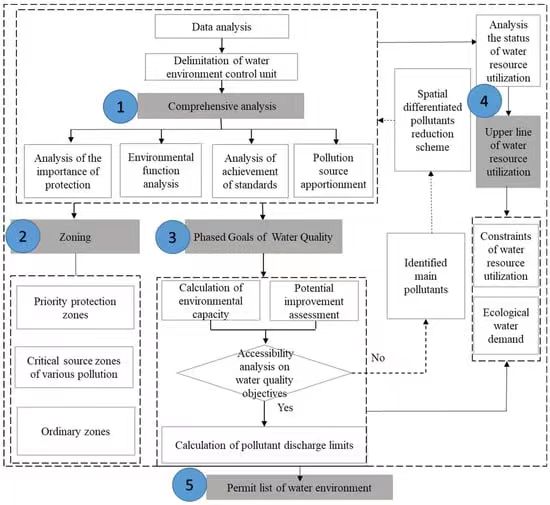
The water-function zoning (WFZ) and water-environment-function zoning (WEFZ) are the most important zoning types for water resources and environment. The zoning or planning types are conflicting, and there is poor interconnection between them, so that they are poorly disseminated to the concerned individuals.
The Three Lines One Permit (TLOP) in China is the first attempt to establish countrywide integrated-water-environmental-zoning based on the previous planning or zoning, and with a finer space scale. In additional, the WQ goals, pollution sources, required load-reduction, and environment permits for each water-environment control unit (WECU) was determined systematically, on one map.
The framework of TLOP in water comprises the bottom line for water-environmental-quality (BLWEQ), the upper limit for water-resource utilization (ULWRU), and the permit lists of the water environment (PLWE). The framework of TLOP in water mainly includes five steps, which are depicted in the Figure below.

TLOP integrates all water-related regulations and establishes a countrywide water-environmental-zoning based on WECU, in China. The challenge involves coordinating the inherent conflicts and integrating different restrictions and goals into one blueprint without overlooking any information. Because of the discrepancy between the hydrological and administrative scales for implementing feasible management policies, traditional watershed-based management measures have limited application. Thus, to achieve the need for refined management of water environments within the period of the 14th Five-Year Plan, TLOP combined watershed-based and administration-based management through WECU, and fully considered the integrity of administrative divisions while maintaining the boundary integrity of small watersheds Townships are the smallest unit of land-use-planning in China, and studying the water environment at this unit level will make an important contribution to fine-scale management. Of course, some data necessary for these studies were difficult to obtain in China.
Undoubtedly, there are some insufficiencies in the TLOP policy. In regard to the lack of consideration of climate and biology variables in TLOP, studies are needed to develop watershed-zoning techniques capable of capturing tangible climatic and biological variabilities. The eco-functional zoning of the aquatic ecosystem should be strengthened further in the TLOP . The TLOP has been introduced into the Yangtze River Protection Law, but its legal status still needs to be promoted. Subsequently, dynamic update, tracking, and evaluation measures should be designed to promote the application of TLOP in different departments.
Achievements: Taking Jinan as a case-study, the territorials of Jinan were delineated into 158 WECUs and six zone-types. The water-quality targets for 67 monitoring sections and 158 WECUs were formulated, and the total maximum pollutant-loads of 138 townships were specified. The water-resource-utilization indicator values and water ecological-demand were then specified. The macroscale, mesoscale, and microscale water-environment access-lists were compiled from four perspectives: spatial constraints, emissions control, risk prevention, and resource utilization.
- Implemented Effectively China TLOP isimplemented effectively china tlop tlop effectively implemented final effectively expression variable effectively vocabulary remember english effectively pollution problem energy implemented connection endpoint validate containerd quot implemented endpoint nll_loss_forward_reduce_cuda_kern implemented